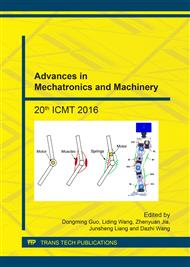p.323
p.328
p.334
p.340
p.345
p.350
p.357
p.363
p.369
Simulation for the Separation of VDR Voice Signal Base on the Local-Wave Method
Abstract:
The Voyage Data Recorder (VDR) is becoming one of the most important equipment of the modern ship, especially for the combat vessel. In the one hand, Many types of data of the combat vessel can be recorded in time and be saved for a long time, which could be benefit for replaying some status or scenes of the vessel on some occasion. On the other hand, For the reason of the complex sources and instability of the data in VDR, It is difficult to separate the VDR voice signal completely, then it is inconvenient for the data retrieval. In this paper, a new method named Local-wave method has been used to resolve the problem in theory, which usually focus on the local feature of the signal. According to the simulation, this method separated the VDR voice signal more effective, and it will be useful to the data retrieve of VDR voice signal.
Info:
Periodical:
Pages:
345-349
Citation:
Online since:
July 2017
Authors:
Keywords:
Price:
Сopyright:
© 2017 Trans Tech Publications Ltd. All Rights Reserved
Share:
Citation:


